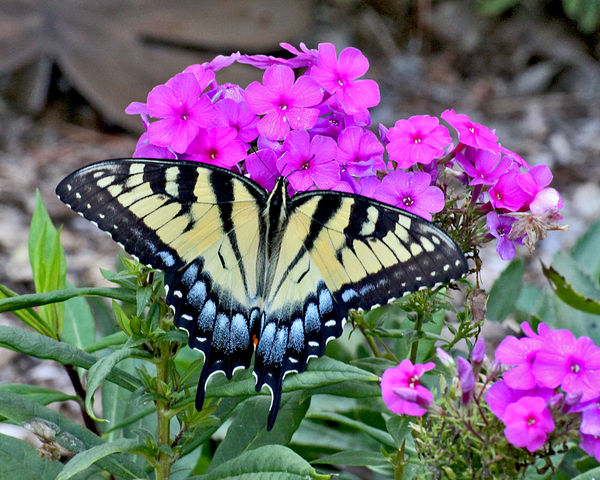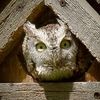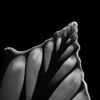Blurry Images
Feb 11, 2012 12:06:26 #
UHH gets a frequent stream of posts complaining about their blurry camera. In most cases, to paraphrase one recent poster, the conclusion is that the cause is the accessory right behind the viewfinder. I propose a thread to share knowledge about how to get tack sharp images.
Here is a recent link to some basic info: http://www.adorama.com/ALC/Article.aspx?alias=FAQ-How-do-you-control-shutter-speed-to-minimize-camera-shake&utm_source=ET&utm_medium=Email&utm_campaign=EmailALC021012
I am personally most interested in data such as presented in that link. Sharp and blurry pictures under different condtions are data! Although I welcome all opinions I'm not so interested in opinions without supporting data.
One specific question I am interested in is, "When or how much should you up the ISO to get a faster shutter speed?" The trade off is noise vs. blur from camera movement. From a number of sources I am getting convinced that much of the advice offered on UHH to "use the lowest ISO" is off base; or at least outdated.
Recent sensors have very low noise at ISOs that far exceed the film days and then have noise reduction on top of it. For example a photojournalist that presented at our camera club this week said he normally keeps his ISO set at 2000. As another example I have seen tests for my camera (Nikon D5100) that show no noticable noise at ISO 1600: http://www.cameralabs.com/reviews/Nikon_D5100/noise_JPEG.shtml
Thoughts?
Here is a recent link to some basic info: http://www.adorama.com/ALC/Article.aspx?alias=FAQ-How-do-you-control-shutter-speed-to-minimize-camera-shake&utm_source=ET&utm_medium=Email&utm_campaign=EmailALC021012
I am personally most interested in data such as presented in that link. Sharp and blurry pictures under different condtions are data! Although I welcome all opinions I'm not so interested in opinions without supporting data.
One specific question I am interested in is, "When or how much should you up the ISO to get a faster shutter speed?" The trade off is noise vs. blur from camera movement. From a number of sources I am getting convinced that much of the advice offered on UHH to "use the lowest ISO" is off base; or at least outdated.
Recent sensors have very low noise at ISOs that far exceed the film days and then have noise reduction on top of it. For example a photojournalist that presented at our camera club this week said he normally keeps his ISO set at 2000. As another example I have seen tests for my camera (Nikon D5100) that show no noticable noise at ISO 1600: http://www.cameralabs.com/reviews/Nikon_D5100/noise_JPEG.shtml
Thoughts?
Feb 11, 2012 12:21:04 #
I start at an ISO of 160 or 200 and adjust as needed, but I shot with a Canon 40D and around ISO 800 I get noise and at ISO 1600 the noise is way to bad to even think about using.
Feb 11, 2012 12:32:13 #
docrob
Loc: Durango, Colorado
MtnMan wrote:
UHH gets a frequent stream of posts complaining ab... (show quote)
Well my thought is on a normal colorado day at ISO 2000 I would be shooting everything at around 1000 ss or more and fstps about 11.....maybe good for journalism not very good for flowers.
Feb 11, 2012 13:10:54 #
Yes, I agree that the image quality requirements for photojournalism may differ from someone else's needs. Unless they are doing it for National Geographic they are likely limited by the print media. This guy was.
The photojounalist is in Boise, ID so also experiences the bright mountain skies...except when there is an inversion like now. His camera, although professional, was at least a couple of sensor generations back. It happens they use Canon professional level cameras but I don't think the camera manufacturer matters so much: all are experiencing the technology improvements. I've even heard Sony makes all the sensors but do not know if that is true.
One may choose to use lower ISO to keep reasonable shutter speeds or for special circumstances; e.g. flowing water or desired motion blur. He was speaking of using IS0 2000-3200 for indoor pics so he can use available light. He also has acess to lenses most of us couldn't approch.
He projected several hundred images while he was talking. All looked sharp except where he didn't want them to; e.g. to show motion blur for bicyclists.
The photojounalist is in Boise, ID so also experiences the bright mountain skies...except when there is an inversion like now. His camera, although professional, was at least a couple of sensor generations back. It happens they use Canon professional level cameras but I don't think the camera manufacturer matters so much: all are experiencing the technology improvements. I've even heard Sony makes all the sensors but do not know if that is true.
One may choose to use lower ISO to keep reasonable shutter speeds or for special circumstances; e.g. flowing water or desired motion blur. He was speaking of using IS0 2000-3200 for indoor pics so he can use available light. He also has acess to lenses most of us couldn't approch.
He projected several hundred images while he was talking. All looked sharp except where he didn't want them to; e.g. to show motion blur for bicyclists.
docrob wrote:
Well my thought is on a normal colorado day at ISO 2000 I would be shooting everything at around 1000 ss or more and fstps about 11.....maybe good for journalism not very good for flowers.
Well my thought is on a normal colorado day at ISO 2000 I would be shooting everything at around 1000 ss or more and fstps about 11.....maybe good for journalism not very good for flowers.
Feb 11, 2012 13:21:48 #
I see that the 40D was introduced in 2007. That puts it at least two generations of sensors back. So your experince seems to fit with getting OK results with 1600 to 2000 on more recent sensors.
One question that I am most interested in is when does the digital noise begin to outweigh the blur due to camera motion...considering that one can use higher shutter speeds with higher ISO, other things (light, f-stop) being equal.
You're probably pretty good at controlling your camera and know when and when not to use image stabilization. Most of those that post here with complaints about focus, while generally experienced, are new to their DSLR. And a reasonable fraction seem to have bought higher level cameras than perhaps they should have; e.g. a D7000 vs. a D3100. I understand the plastic bodies of the more entry level cameras actually do a better job of damping mirror slap than a higher end metal body camera.
Here's a comparision of a recent generation change:
http://snapsort.com/compare/Canon_EOS_50D-vs-Canon_EOS_5D_Mark_II
It notes, "The 5D Mark II has excellent image quality 1.4 f-stops higher ISO than the 50D". You can turn that around and say at 1.4 times the ISO...so ISO 800 on the 50D might compare to ISO 2000 on the 5D_Mark_II. The gap would be wider back to the 40D. (I don't know about Canon models to know if that's the latest.)
One question that I am most interested in is when does the digital noise begin to outweigh the blur due to camera motion...considering that one can use higher shutter speeds with higher ISO, other things (light, f-stop) being equal.
You're probably pretty good at controlling your camera and know when and when not to use image stabilization. Most of those that post here with complaints about focus, while generally experienced, are new to their DSLR. And a reasonable fraction seem to have bought higher level cameras than perhaps they should have; e.g. a D7000 vs. a D3100. I understand the plastic bodies of the more entry level cameras actually do a better job of damping mirror slap than a higher end metal body camera.
Here's a comparision of a recent generation change:
http://snapsort.com/compare/Canon_EOS_50D-vs-Canon_EOS_5D_Mark_II
It notes, "The 5D Mark II has excellent image quality 1.4 f-stops higher ISO than the 50D". You can turn that around and say at 1.4 times the ISO...so ISO 800 on the 50D might compare to ISO 2000 on the 5D_Mark_II. The gap would be wider back to the 40D. (I don't know about Canon models to know if that's the latest.)
MWAC wrote:
I start at an ISO of 160 or 200 and adjust as needed, but I shot with a Canon 40D and around ISO 800 I get noise and at ISO 1600 the noise is way to bad to even think about using.
Feb 11, 2012 17:32:19 #
MtnMan wrote:
Simple. Depends on the camera, as you've noted. Four-to-five year old designs have a somewhat lower threshold than current generation cameras. You can't just say, "Raise your ISO to 1000 and you'll be fine." Fine on a Canon 5D Mark II, but not on a 40D. I think, overall, that ISO ranges are, for all but the most basic entry level DSLRs these days, far 'better' than film ISO/ASA sensitivities were. One question that I am most interested in is when does the digital noise begin to outweigh the blur due to camera motion?
Blurry images, in my completely unscientific opinion, are caused by these things:
1) Too wide an aperture for the scene causing a narrow DOF and "blurry" subject that would not be blurry if a more appropriate aperture was chosen.
2) Subject movement.
3) Camera shake. IS is good but its not a miracle worker.
4) Poor manual focusing or maladjusted AF
5) Atmospheric distortion, esp. on long distance shots.
6) Cruddy glass (as in dusty, dirty, fingerprinted, etc)
I know some people consider IS or VR a replacement for a tripod but they're out of their minds. If you're on a tripod, your chances of getting a tack sharp image are probably three or four times greater than if you hand-hold, I'll bet.
Feb 11, 2012 22:08:04 #
Good list!
For the discussions I've seen on UHH I'd say the most common cause here is people not knowing how to use their camera. That ranges from not knowing they need to turn the lens AF on through how to use the various focus options to not understanding depth of field. Your list captures a couple of these.
ISO setting/digital noise is way down the list and conflicts with what they need to do for your item 2 and 3. I suggest recommending increasing the shutter speed is usually going to be much more helpful than advising people to reduce their ISO.
One interesting observation in the first link I posted is the suggestion that when applying the rule of thumb that shutter speed should be faster than one over the lens mm needs to be adjusted for cropped sensor camaeras. One way to put it is to use the 35mm camera equivalent ISO. Another conservative suggestion is to suggest going twice as fast as one over the actual mm.
Image stabilization/Vibration reduction seems like it should help on this more than it does. One place it does not is if people follow the advice to turn it off when using a tripod. I don't know how much that figures in.
For the discussions I've seen on UHH I'd say the most common cause here is people not knowing how to use their camera. That ranges from not knowing they need to turn the lens AF on through how to use the various focus options to not understanding depth of field. Your list captures a couple of these.
ISO setting/digital noise is way down the list and conflicts with what they need to do for your item 2 and 3. I suggest recommending increasing the shutter speed is usually going to be much more helpful than advising people to reduce their ISO.
One interesting observation in the first link I posted is the suggestion that when applying the rule of thumb that shutter speed should be faster than one over the lens mm needs to be adjusted for cropped sensor camaeras. One way to put it is to use the 35mm camera equivalent ISO. Another conservative suggestion is to suggest going twice as fast as one over the actual mm.
Image stabilization/Vibration reduction seems like it should help on this more than it does. One place it does not is if people follow the advice to turn it off when using a tripod. I don't know how much that figures in.
JimH wrote:
quote=MtnMan One question that I am most interest... (show quote)
Feb 11, 2012 23:34:12 #
I don't think that there is a hard and fast rule that can be applied across the board regarding ISO vs shutter speed. You need to test your camera body and its' sensor with your lenses and your post processing programs noise reduction to see just what you can carry. I shoot birds and I use a Canon 7D and a 500mm lens and in broad daylight I am usually shooting at 1/2000,f/8 and ISO 800 and can get tack sharp photos. I can shoot ISO 1600 but noise starts to be a problem if I am doing it because the light is dropping. I get too much noise in the shadows. However, if I have plenty of light and I am raising MY ISO in order to use a smaller aperture or higher shutter speed then I can do it. The other factor that is involved here is how much enlargement and or cropping you need to do. You cannot expect to be able to crop a lot in a high ISO image without the noise getting out of hand.
Cerulean Warbler shot at ISO 3200, f/8, 1/500 sec on a tripod, full frame image.

Feb 11, 2012 23:44:05 #
Feb 12, 2012 00:48:20 #
You provide a wonderful illustration of the impact of using a fast shutter speed and not being afraid of high ISO to accomplish it.
Beautiful picture! Wish I could do that well.
You introduce some additional considerations: ambient light intensity and the effect of cropping. Low light intensity and cropping both affect the impact of noise.
I'm still thinking overall that when helping those with blurring issues after handling the basics of how to use their camera and how to minimize camera movement the emphasis should be on getting a relatively fast shutter speed and not worry about what ISO it might take to acccomplish that. And that the minimum shutter speed should be on the order of twice as fast as the reciprocal of the lens length in mm. In other words with a 500 mm lens they should seek to use at least 1/1000.
Beautiful picture! Wish I could do that well.
You introduce some additional considerations: ambient light intensity and the effect of cropping. Low light intensity and cropping both affect the impact of noise.
I'm still thinking overall that when helping those with blurring issues after handling the basics of how to use their camera and how to minimize camera movement the emphasis should be on getting a relatively fast shutter speed and not worry about what ISO it might take to acccomplish that. And that the minimum shutter speed should be on the order of twice as fast as the reciprocal of the lens length in mm. In other words with a 500 mm lens they should seek to use at least 1/1000.
birdpix wrote:
I don't think that there is a hard and fast rule t... (show quote)
Feb 12, 2012 07:26:40 #
for outdoor shooting i prefer iso 100 for iq.with my sony a-550 i feel ok with up to 800 iso. with my pentax 645d i still like to stay at 800 isi or less.
Feb 12, 2012 07:45:49 #
On the subject of noise I recently received this opinion from an instructor: "If the subject is compelling enough, it is better to have noise than to have missed the shot."
Something to consider?
Something to consider?
Feb 12, 2012 08:08:53 #
Very interesting discussion! What started out to be a Photography 101 question, ended up to be a very comprehensive discussion with a great example.
Feb 12, 2012 09:47:31 #
Here is a tiger swallowtail butterfly taken at 3200 ISO, 1/160 sec at F14 ( to get good DoF )
Using the IS on the lens helped keep the pic sharp ( it was hand held)
Using the IS on the lens helped keep the pic sharp ( it was hand held)

Feb 12, 2012 09:54:00 #
MtnMan wrote:
Good list! br br For the discussions I've seen on... (show quote)
Though we disagree on a few of your recent blanket statements about ISO, I do agree that letting shutter speed take a front seat ahead of ISO is usually a good thing. No matter how little digital noise a picture has....blurry camera-shook photos are good for nothing.
I also agree with the cropped sensor rule of thumb. I CANNOT use the 1/focal length rule...period. I'm too shaky and it just does NOT work for me.
I have to up the shutter speed substantially to get sharp photos.
If you want to reply, then register here. Registration is free and your account is created instantly, so you can post right away.









